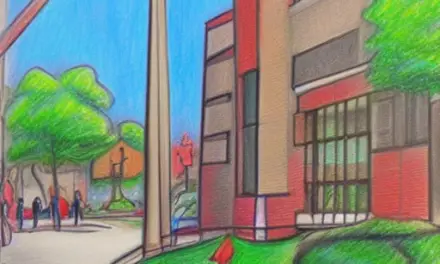When growing sugar snap peas in the garden, you must keep a few gardening tips in mind. They need full sun for the best growth, and need support from a trellis or support system. A railing from your patio works well, or you can buy stakes and tie them together with twine. You can also use wire ties to pin the tendrils of peas to a trellis. Sugar snap peas need about six hours of sunlight a day.
Planting seeds in rows
Sugar snap peas are easy to grow and are very delicious. Their sweet, tender shell and edible pod make them a great addition to salads, stir-fries, and other dishes. After planting them, they will take only a few days to sprout. Once a few peas have popped up, the plants will begin to produce more quickly.
Depending on your location, the best time of year to plant sugar snap peas is early spring. The soil should be warm enough for your hands to handle. If you live in a temperate climate, peas can be planted as early as ten weeks before the first frost of the fall. Sugar snap peas grow quickly and can tolerate light frosts.
Before planting, prepare your bed with the proper nutrients for sugar snap peas. The soil must be fertile. It should be 12 inches deep and contain at least one inch of perlite or grit. The spacing between seeds should be at least an inch. Planting peas in rows allows for more airflow around them and reduces the likelihood of insect and disease damage. A 12 X 12-inch bed should be sufficient for eight plants. Side-dressing the rows with compost when flowering has begun is another way to enhance the soil’s fertility.
If you’re unable to plant sugar snap pea seeds in rows, you can plant them in containers. Sugar snap peas will grow in containers but will need plenty of space and support. They grow very quickly and produce a large crop.
Fertilizing
Sugar snap peas are easy to grow, and are delicious to eat both raw and cooked. They grow best in full sun, but can also tolerate partial shade. They also prefer well-drained soil, which is why they are often grown in raised beds. You should plant your sugar snap pea seeds about 1cm deep and 6cm apart.
Fertilize sugar snap peas regularly to help them grow properly. Pea plants need about half an inch of water every week during the germination stage and a half-inch each week once they’ve bloomed. Also, mulch around your sugar snap pea plants to prevent weeds and let air and moisture stay in the soil. Sugar snap peas are soft plants, so it’s important to support them.
Plant seeds about one inch apart in well-drained soil and water them thoroughly. Depending on their variety, sugar snap peas can sprout in seven to 10 days. They will grow faster in soil that is warmer than cold. Sugar snap peas can also be planted in seed-raising pots.
Harvesting
Sugar snap peas are a delicious and nutritious crop that you can grow at home. Depending on the variety, they can be harvested within a week or two of the first flowers appearing. To harvest your crop, wait until the pea pods have reached about the same length as the seed pods themselves.
Sugar snap peas are fast-growing plants, and they need support to grow properly. A trellis or stakes tied together with twine can provide them with the support they need to climb. You can also use wire ties to pin the pea tendrils to the trellis. Make sure to plant sugar snap peas in areas where they receive at least six hours of daily sunlight.
Plant sugar snap peas in the northeast corner of the garden. Peas grow between four and six feet tall. They require a trellis or lattice at least two feet high. If you do not want to use trellises, you can use small branches that you weave between the uprights. The more branches you have, the better.
Sugar snap peas are a great addition to your spring and fall gardens. They can be planted in early spring for early spring harvest, or in late summer for late fall harvest. When planting sugar snap peas, make sure they are an inch deep and use a nitrogen-fixing inoculant to improve growth and yield. This type of inoculant contains natural bacteria that improve soil nitrogen levels and boost plant growth. You can purchase these inoculants from a seed company or garden center.
Pea aphids
If you’re worried about aphids in your pea plants, there are several home remedies that can help. For instance, you can mix one part of neem oil with one part water in a spray bottle, and apply it to your pea plants each morning and evening. This solution will also help protect them from other insect pests, like mosquitoes.
Another important gardening tip is to water your pea plants regularly to keep away the pests. Without water, peas become weakened, which means that they can’t produce enough chemicals to fend off aphids. Watering often will also keep aphids from growing. You can also use reflective mulch, known as mylar, to repel aphids from pea plants.
Insecticides are another way to control pea aphids. While these products are a bit more potent than the organic ones, they can still kill the insects that feed on pea plants. If you’re concerned about the health of your pea plants, you can also use ladybugs, which are natural enemies of pea aphids.
Aside from using insecticides, you can also use companion plants in your pea garden to help your peas thrive. A few recommended companion plants are carrots, beans, lettuce, turnips, and spinach. However, onions and garlic can have a negative impact on pea growth. While peas are generally not pest-prone, they can be susceptible to root-rot and fusarium wilt. Look for signs of these diseases in your pea plants, such as yellow lower leaves. A composted soil will help prevent fusarium wilt and root-rot.
Pea mildew
In order to prevent pea mildew, it is crucial to keep plant debris from the soil clean. This way, the plant won’t develop the disease that is responsible for its deformity. Additionally, the plant should be watered regularly. Peas with low soil moisture levels are susceptible to pea mildew. If you notice streaks on leaves or stems, you should inspect them. Identifying this disease will help you keep your crop healthy.
A homemade spray made from baking soda or garlic mixed with water can be applied to the affected plants. However, you should avoid over-using the spray as it can damage the plant. A good way to use the spray is to apply it once or twice a week. You can also apply the solution to the entire plant.
If you have a small infestation, you can apply a fungicide to kill the fungus. To prevent further infection, ensure that your peas are properly spaced. If they are planted too close together, downy mildew will develop. This fungus is usually accompanied by yellow leaves and darkened seed pods. Another type of mildew is powdery mildew, which can cause white or gray mold to develop on the pea plant.
Planting in containers
Sugar snap peas are a common crop that are suitable for growing in containers. They are not only edible, but they are also very easy to grow. There are many different varieties, including bush peas, which have shallow roots and won’t tip over. The first few peas will sprout after they are planted, so they won’t take long to grow.
Peas are not very picky about the soil they grow in, but they do need a moist, cool environment. If you plant peas in a container, you should choose a well-drained potting mix to give them the best possible start. Moreover, you should always remember to water them properly because too much water will cause them to rot and produce a smaller yield.
Ensure the soil in your containers is loamy and well-drained. Avoid planting peas in plastic containers, as they heat up the soil and retain moisture, which can reduce yields. Peas should be planted 4-6 weeks before the last frost date. It’s also advisable to use a trellis for support.













